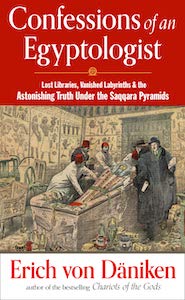
The Fright Before Christmas: Surviving Krampus and Other Yuletide Monsters, Witches, and Ghosts, by Jeff Belanger and illustrated by Terry Reed
New Page Books, 1637480156, 200 pages, September 2023
I absolutely love the Yuletide season; I proudly consider myself a Christmas witch. There’s such a potency of magic in the air, especially during the darkest nights of the year. But as I’ve grown in my spirituality, embracing the darker side too, I’ve come to learn there’s much more than the glistening of lights, merry festivities, and myths of jolly Santa; there’s a twisted, rebellious side to the season as well. The Fright Before Christmas: Surviving Krampus and Other Yuletide Monsters, Witches, and Ghosts by Jeff Belanger brings the shadow realm of Christmas to the forefront, inviting readers to learn more about the underbelly hidden beneath the glitz.
As the Emmy-nominated host, writer, and producer of the New England Legend series and podcast, Belanger is the perfect guide for a reader’s journey into the hidden characters of Christmas. He is a natural storyteller with a knack for quips at the right time, leaving one chuckling with wicked delight. During a moment of exasperation in hanging his wreath, Belanger started to question the “why” of the Christmas season, leading him “down a dark and sinister rabbit hole”1 of research into tales of monsters that punish, spank, and sometimes, even eat, the naughty.
Before launching into these tales of Christmas horror, Belganer firmly roots the reader in the history of the yuletide season. Beginning with the Winter Solstice, he paints a picture of how this season of cold weather and little light is good cause for fear. We forget in the modern era just how deadly the winter months can be, everyday a fine line between survival and demise.
Despite the harrowing weather conditions, the Christmas season for centuries has been a time of celebration, debauchery, and merrymaking. Belanger invites readers to the party as he describes Romans dressing up for Saturnalia, the Norse hanging their evergreen branches, English workers wassailing, and more! While the common theme seems to be heavy drinking and revelry, Belganer does a wonderful job describing how the traditions of times past have contributed to aspects of our current Christmas season.
And what a cast of characters you’ll meet in this book! From my personal favorite La Befana, who might clean your house for you, to the dashing beast Mari Lwyd tryin to catch stray souls, to murderous Père Fouettard, there’s no telling what you might encounter as the nights grow long this holiday season. Did I mention there’s also mischievous elves and killer cats too?
There’s even plenty of information about the gory bits of Christian history too, including St. Nicholas’s backstory and feat of reviving butchered children from the dead. Try telling that to some of your more religious family members! Oh wait, I did bring it up at dinner after reading that story in the book, and they all stared at me incredulous, wondering if I had made this up. Definitely some good tidbits of information in this book to pass along!
One thing that I found very interesting is how many of these monsters are making a revival thanks to the internet. For decades, even centuries, much of this monster folklore was confined to the countries of origin. While the characteristics of the monster are still situated in the culture of their origin, as these tales continue to spread, inevitably, these monsters too will adapt to modern times, even in different regions.
For instance, Krampus, who has a very long historical past, including the church trying to eradicate him in the 13th century, became popular again in the 1800s in “Austria, Bavaria, Slovenia, and the Czech Republic.”2 Until around 2000 when the tale of Krampus started to spread online, this folklore remained primarily in these regions.
Now Krampus has become a popular folk figure worldwide, and I’ve had the chance to participate in quite a few events in his honor! Last year, there was a photoshoot with Krampus at Scarehouse in Pennsylvania, the annual Krampus festival in Asbury Park, New Jersey, and the Parade of Spirits in honor of Krampus in Philadelphia. Clearly, my area has been influenced by the Krampus tradition; just Googling “Krampus events” I can see quite a few lined up for this year already!
One more thing to note about The Fright Before Christmas is the design! The book is a hardback cover with one of those built-in bookmarks for added convenience. Illustrator Terry Reed has done a great job depicting each monster so that readers have a visual. Plus there’s tons of authentic vintage visuals (postcards, advertisements, photographs, etc) showcasing what Belanger is describing in the text. It would be a perfect book for a coffee table or as a fun gift for a pollyanna!
All in all, this book is a perfect mixture of delight and horror, history and lore. Belanger gives life to the monsters of Christmas, providing readers with a new perspective on the traditions we enact each year. After reading The Fright Before Christmas, you’re bound to be one of the most interesting people to chat with this holiday season as you regal others with facts about the hidden origin of Christmas traditions. And given that you’re now aware to face these monsters, probably also the person most likely to survive the winter!
For those who like myself feel a connection to these monsters, I have great news: there’s a kickstarter for Yuletide Monsters Oracle Deck! Currently the estimated delivery is December 2023, so if you make a pledge, there’s a good chance you’ll be able to do some spooky Christmas divination. According to the kickstarter, this “40-card oracle draws on the traditional structure of tarot, the efficiency of the Sicilian Scopa Deck, and the whimsy of an Oracle deck.”3 How cool! 😀
Alanna Kali is an astrologer, numerologist, and pioneer spirit that loves to explore life through the lens of depth psychology. She has a passion for studying the humanities and social trends. Her academic work is centered upon reuniting body, mind, and spirit through eco-psychology. She loves reading, spending time in nature, and travel.


